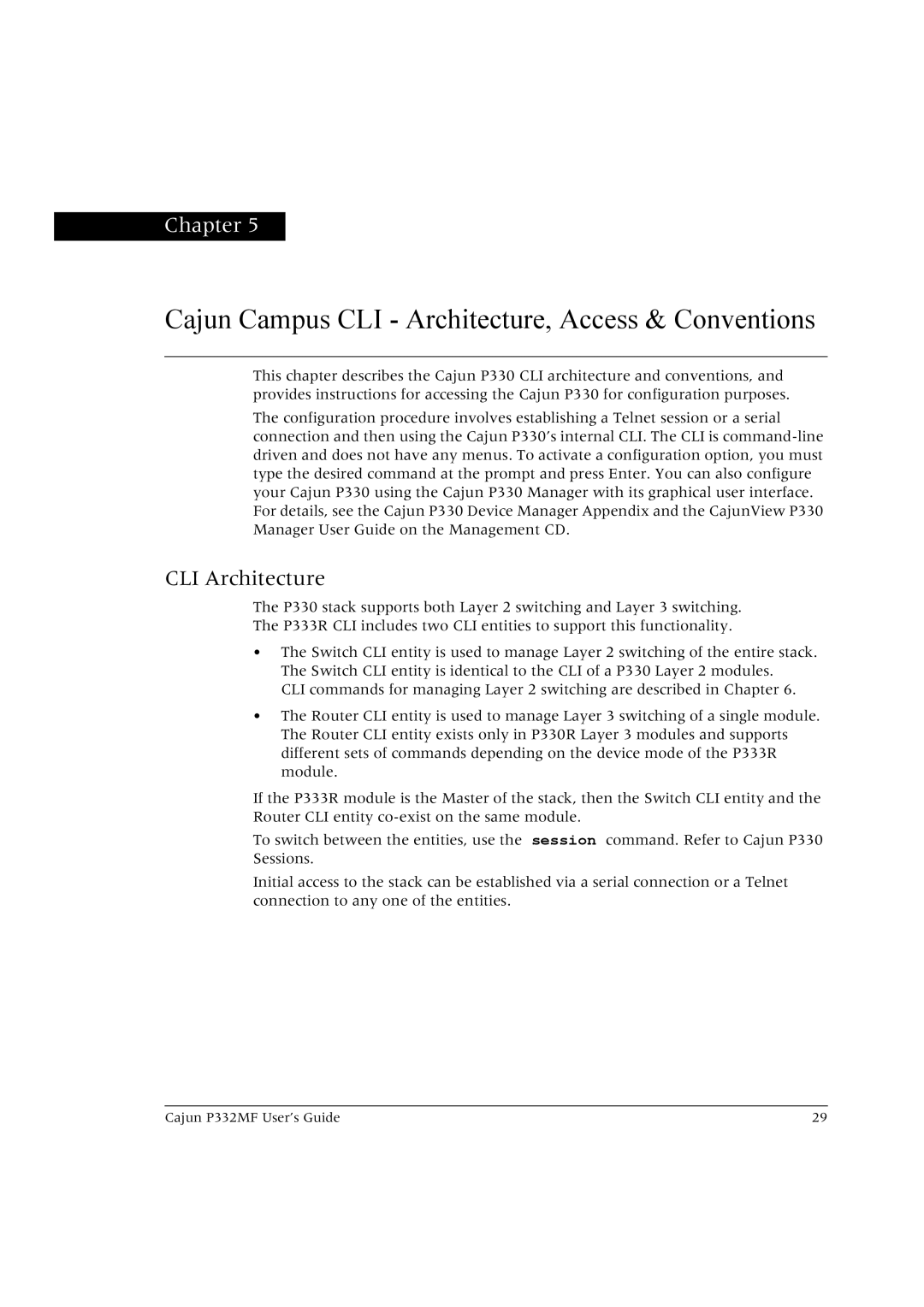
Chapter 5
Cajun Campus CLI - Architecture, Access & Conventions
This chapter describes the Cajun P330 CLI architecture and conventions, and provides instructions for accessing the Cajun P330 for configuration purposes.
The configuration procedure involves establishing a Telnet session or a serial connection and then using the Cajun P330’s internal CLI. The CLI is
CLI Architecture
The P330 stack supports both Layer 2 switching and Layer 3 switching.
The P333R CLI includes two CLI entities to support this functionality.
•The Switch CLI entity is used to manage Layer 2 switching of the entire stack. The Switch CLI entity is identical to the CLI of a P330 Layer 2 modules.
CLI commands for managing Layer 2 switching are described in Chapter 6.
•The Router CLI entity is used to manage Layer 3 switching of a single module. The Router CLI entity exists only in P330R Layer 3 modules and supports different sets of commands depending on the device mode of the P333R module.
If the P333R module is the Master of the stack, then the Switch CLI entity and the Router CLI entity
To switch between the entities, use the session command. Refer to Cajun P330 Sessions.
Initial access to the stack can be established via a serial connection or a Telnet connection to any one of the entities.
Cajun P332MF User’s Guide | 29 |
